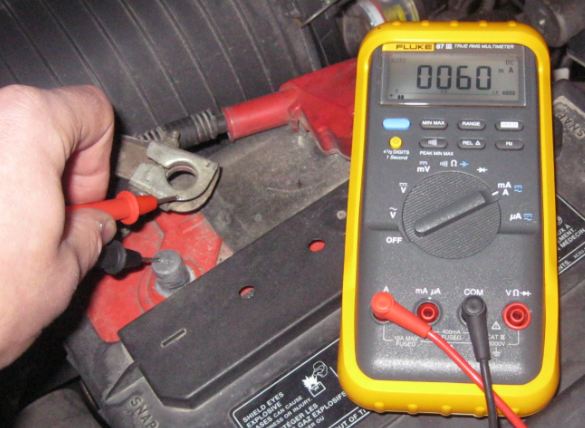What is 'Normal' for Parasitic Draw?

- Sponsor
- OPTIMA Batteries
- Location
- Glendale, Wisconsin


I was having a conversation recently on an Internet message board, when the subject turned to parasitic draws or "key-off" loads. As I explained the math behind parasitic draws, it was suggested that an 85-milliamp draw is not all that uncommon on newer vehicles. That is absolutely true. Memory seats, mirrors, radio presets, satellite radio, GPS systems, Wifi and lots of other fancy electrical gadgets have combined to greatly increase the electrical demands of many newer vehicles. However, just because an 85-milliamp draw may be normal, that doesn't mean an 85-milliamp draw won't adversely impact battery lifespan and performance, if the battery isn't properly-maintained.
Some automakers have responded by shipping their vehicles with solar chargers, to keep the batteries charged as much as possible between the time the cars leave the factory and when they arrive at the dealership. Some high-end exotics even come with battery maintainers as standard equipment. As even more electronics are packed into newer vehicles, those trends are both likely to continue.
Until the day comes when battery maintainers are standard equipment on all new vehicles, we just need to be vigilant with our batteries. If a vehicle is driven daily, the alternator should probably have no trouble properly maintaining the battery, provided that daily use doesn't consist of a multitude of five to ten-minute drives.
The key to long life for any battery is to make sure battery voltage doesn't drop below 12.4 volts. The combination of a significant parasitic draw and long periods of non-use can easily cause voltage to drop below 12.4 volts. When that happens, sulfation begins to diminish both capacity and performance. That is why vehicles that only see weekend or occasional use (this includes boat owners) should have their batteries maintained with a quality battery maintainer, like the OPTIMA Digital 200+, 400 or 1200 series of chargers and maintainers.
In that same conversation, it was suggested that a 200-milliamp draw was "acceptable." That is certainly not the case. In fact, we suggest a 25-milliamp draw is acceptable and anything that exceeds 100-milliamps indicates an electrical issue that needs to be addressed. Although I have checked the parasitic draw on my Excursion in the past, I'd never photographed that test. I did just that today and it indicated a draw of about 60-milliamps.
That's not too bad, considering I have some of the newer electrical accessories, like memory seats, mirrors and radio presets, but how long can this truck sit before it completely discharges the batteries? This truck is equipped with two Group 34/78 REDTOP batteries, which means it has 100Ah of reserve capacity. If the parasitic draw is 60 milliamps, that means it will discharge the batteries at a rate of 1.44 Ah per day (.060 x 24 hours). That means if the truck is parked with new, fully-charged batteries (most are not), it will take just under 70 days (100/1.44= 69.4) days for the truck to completely discharge both batteries.
If the batteries are not fully-charged, that timeframe can be shortened significantly, depending on the state of charge. That timeframe also can be shortened in hotter climates or extended in more temperate climates. The batteries also need to be well above a 0% state of charge to start the truck. That timeframe can also be shortened significantly if there are any additional accessories that may draw current with the key off, like an alarm or even a cell phone charger. If the parasitic draw went up to 85-milliamps, the math works out to 2.04 Ah per day, which would accelerate the discharge rate to a 0% state of charge by 20 days.
While these timeframes all seem more than reasonable for a typical vehicle, don't forget this truck is running two batteries. If you have an 85-milliamp draw in a car with just a single 50Ah battery, as is the case in most vehicles that aren't diesel trucks, your battery will be completely discharged from a full state of charge in just over three weeks.
If you think you've measured your vehicle's parasitic draw and found it to be zero or you don't know how to measure your parasitic draw, but would like to learn, check out this video for simple instructions.
